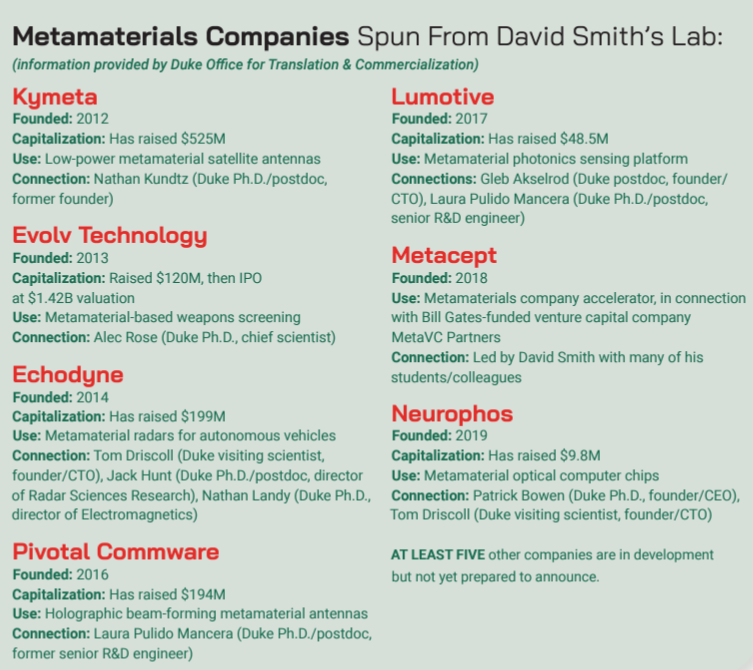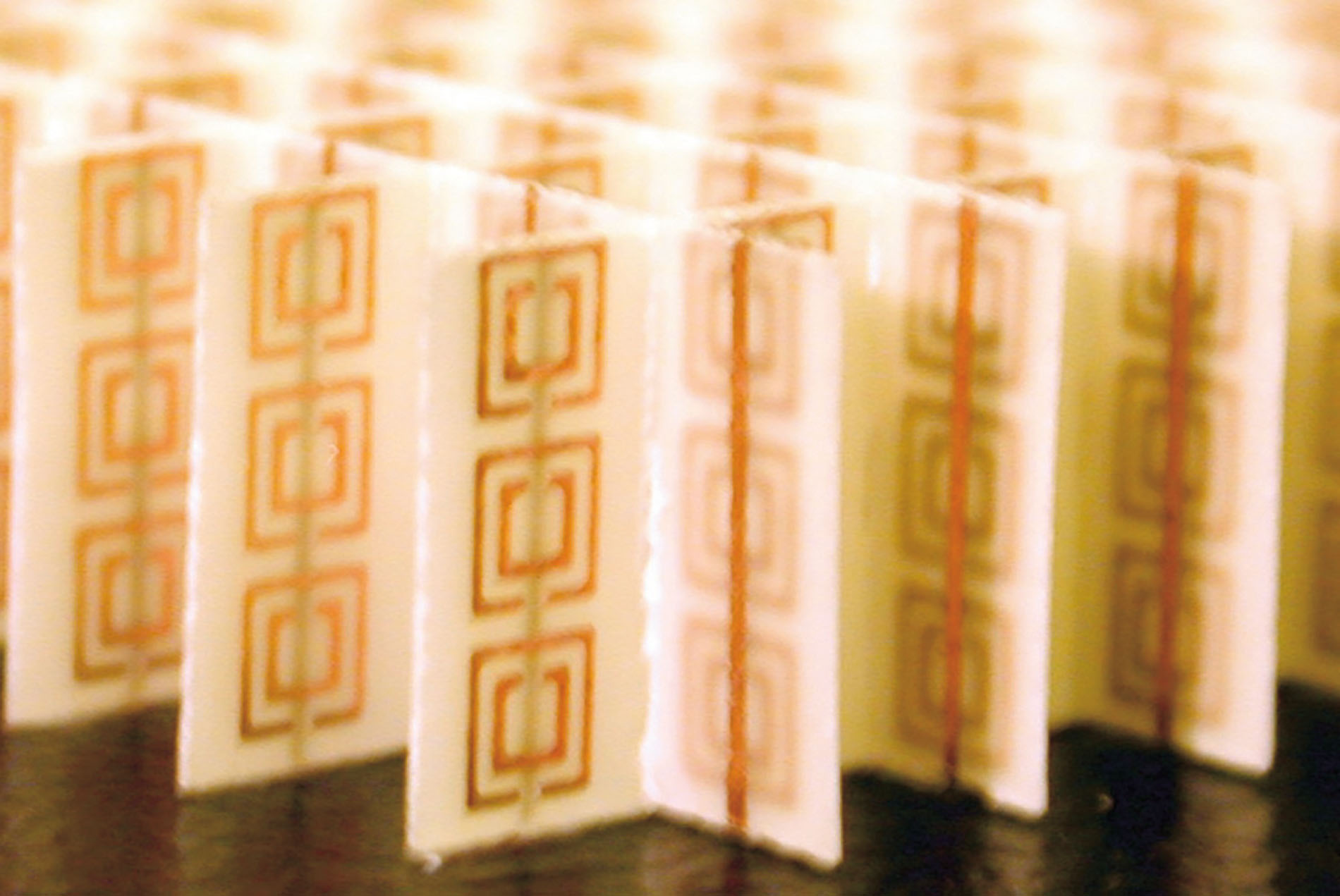Want to know where metamaterials that have grown from the work in David Smith’s lab show up? Listen to Nathan Kundtz M.S.E.’08, Ph.D.’09. “If you've been reading about the Ukrainian drones that have opened up the Black Sea, every single one of them has a Kymeta antenna on it,” says the Kymeta founder. Kymeta was the first of Smith’s lab’s spinoffs, created in 2012 and now capitalized at more than $500 million.
Remember that scene in the 1990 movie “Total Recall” where Arnold Schwarzenegger runs through the screening device and you see his skeleton and the gun? Evolv, the second spinoff, makes technology for real time, walk-through scanners you’ve probably passed through at sporting events.
Robin Rasor of Duke Translation & Commercialization says there’s more than just great science behind the successful startups. Initially working with technology venture capital company Intellectual Ventures, Duke scientists tended to get a smaller piece of the control – and revenue – than was ideal.
“We didn’t have any control – we just got a little bit of stock,” Rasor says, and scientists were not enormously happy with the arrangement. “We’ve evolved to the point where now [new] companies are having direct licenses with us,” she says. “And we have a translational fund, which is to sort of help technologies move along the ‘valley of death,’” the tenuous period when startups have run through their initial investment but haven’t yet begun earning revenue. “We’re more collaborative, in terms of helping figure out the business model for the company, doing the actual deals,” she says.
Rasor cites as an early user of their services Michael Boyarsky Ph.D.’19, currently a research scientist working with David Smith’s lab. He has been working for a long time with the notion of spinning off a satellite imaging company, but recently that focus increased. “I’ve joined the Duke New Ventures Program [which provides connections to experienced executives]. I’ve gotten some business mentorship through that. So we’ve definitely been progressing things a lot more quickly lately.”
Not quickly enough to announce his company, which he expects to launch later this year, but he says a big part of their work is using metamaterials “to create devices that can be cheaper, lighter, and better,” in his case using metasurface antennas to enable satellites to work longer and more efficiently. Because moving a physical antenna or generating a beam creates heat, many satellites can work only minutes a day, using the rest of their time to inefficiently radiate heat into space. Using metamaterials both to steer the beam and to generate the microwaves that provide the “flash” for images could multiply usable time by a factor of 10. “We aim to be the first real-time satellite imaging provider to operate in all conditions.”
That yet unidentified company will just be the next in a series, with several more still in development, all using technology from Smith’s lab. As they say in the satellite antenna world, stay tuned.

